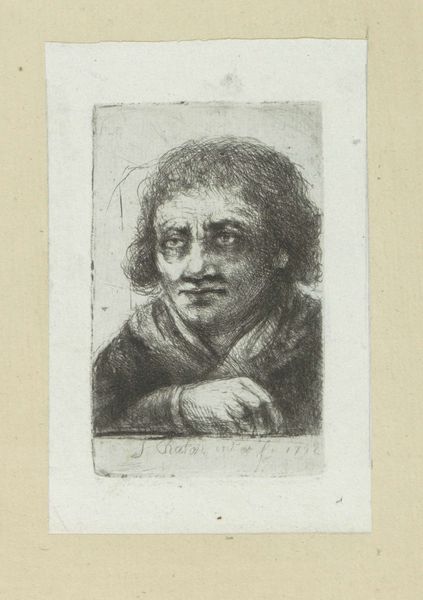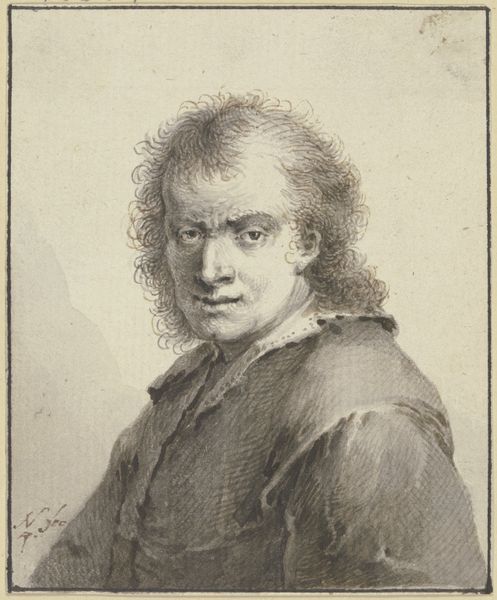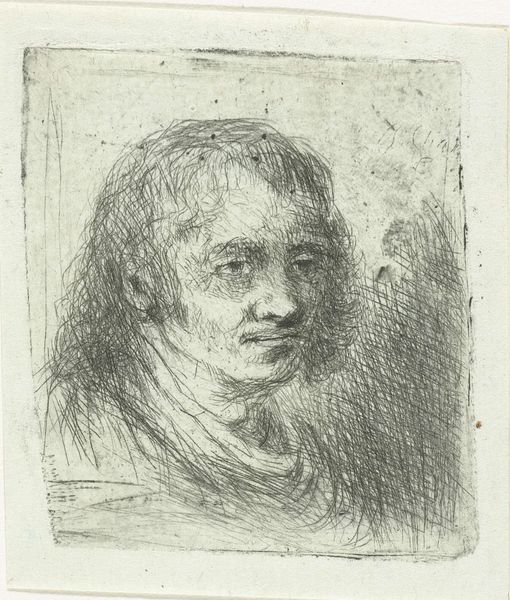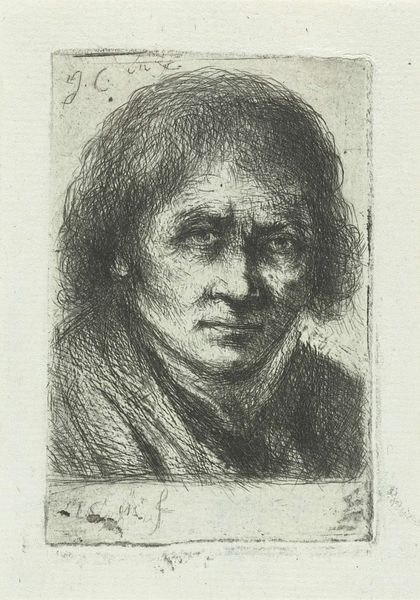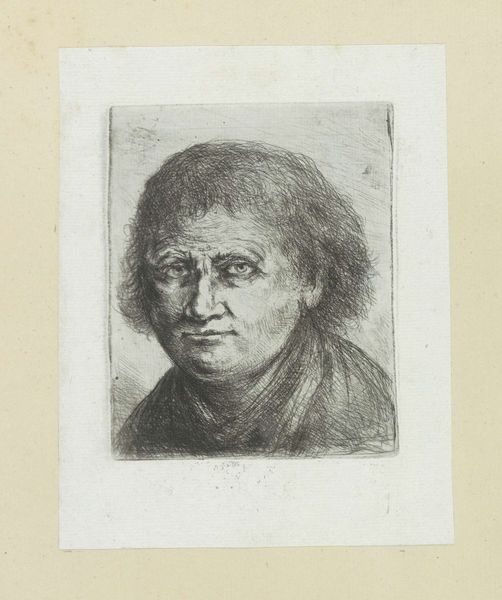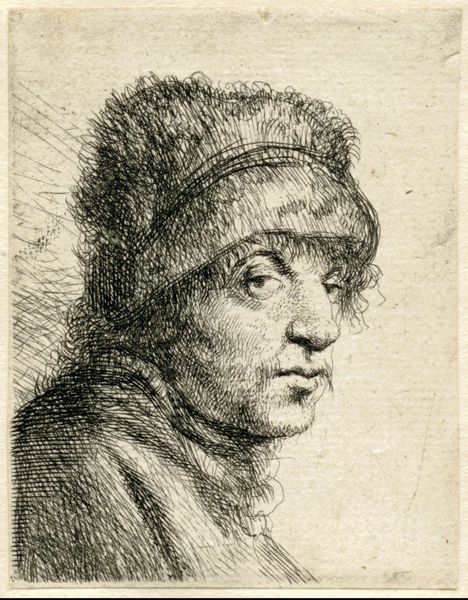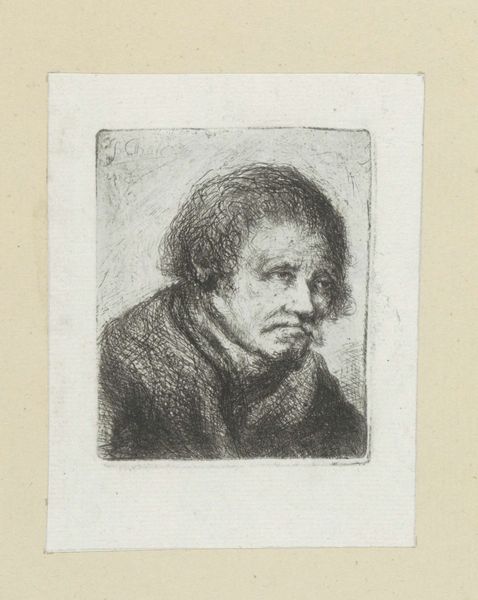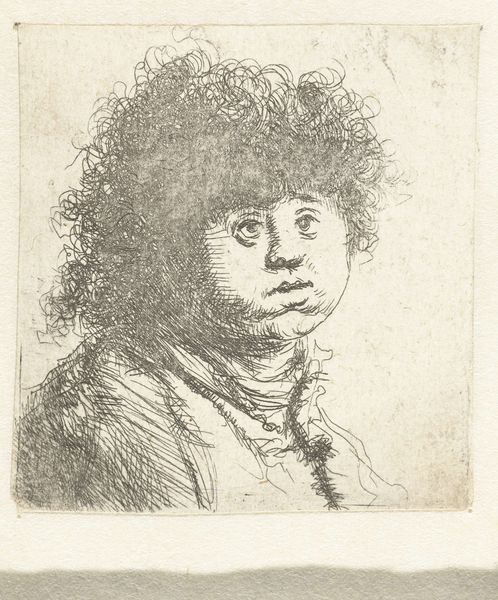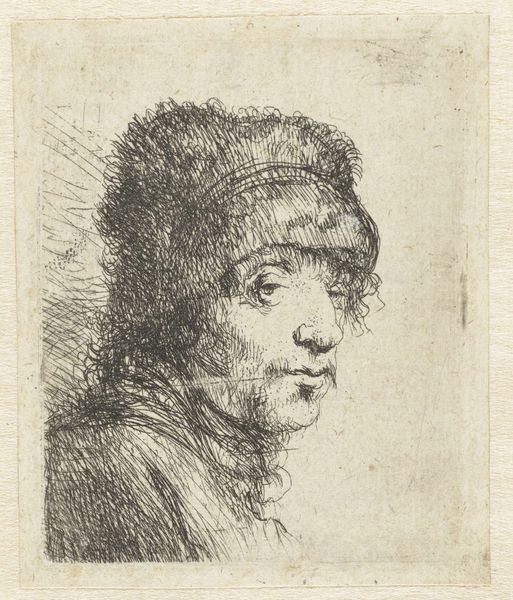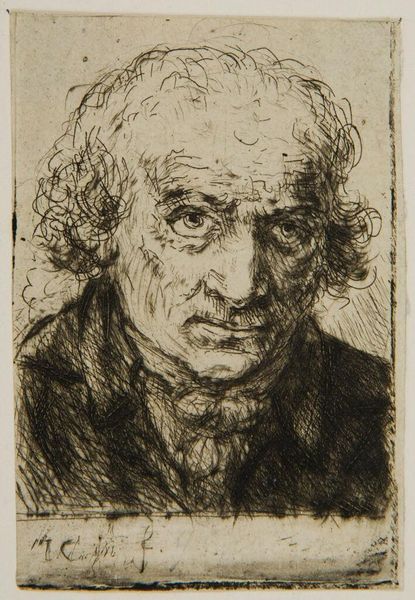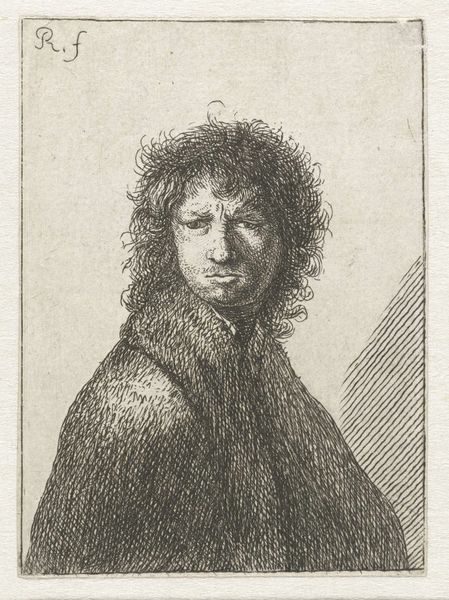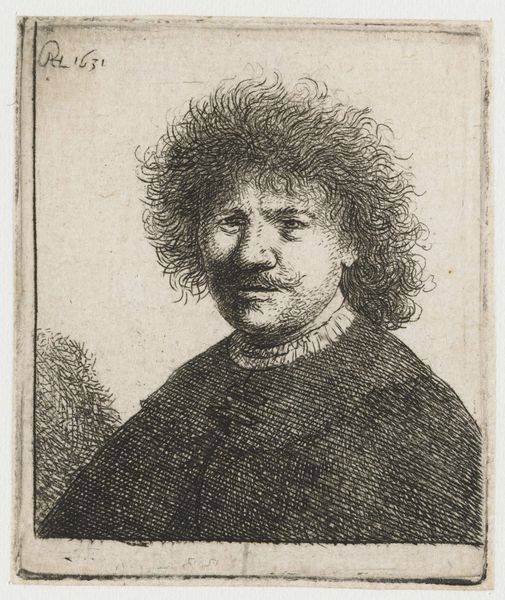
drawing, etching
#
portrait
#
drawing
#
etching
#
portrait drawing
Dimensions: height 92 mm, width 56 mm
Copyright: Rijks Museum: Open Domain
Curator: Here we have Jan Chalon's "Volwassen man, zijn rechterhand zichtbaar," or "Mature man, his right hand visible," created in 1792. It's an etching. What catches your eye first? Editor: The weight of the lines! It’s almost oppressive, giving the subject a kind of melancholic, weighty presence. He looks burdened by something, doesn't he? Curator: Etchings often allow for this density, yes. It's interesting to consider the printmaking context. These images circulated in multiples, so how did access to portraiture affect constructions of identity for a broader public? It shifts portraiture away from solely being markers of aristocratic identity. Editor: That makes me think about representation, who gets to be seen, and the nuances of that visibility. Look at his expression - he’s not idealized, right? He has wrinkles, his hair is a bit disheveled. It’s a very human portrayal. What does that choice say in 1792? Is Chalon making a statement about the common man? Curator: It could be a statement about naturalism in portraiture. 1792 was a period ripe with revolution in France. The etching suggests a leveling of representation, where imperfection and realism take precedence over aristocratic artifice. This ties into Enlightenment ideals of reason and truth, dismantling previous modes of art and politics. Editor: But it’s also a question of access, right? Who had the resources to purchase and circulate prints like these? Were these new modes of representation truly democratic or still largely within reach only for certain classes? The revolutionary ideals might have been undercut by structural inequalities. Curator: Exactly. That’s why thinking about the gallery space and its audiences is so critical to art history. Even art that strives for revolutionary representation is always caught within socio-economic systems of patronage. Editor: It speaks to the constant struggle for accessibility in art. Thanks for contextualizing those tensions for me! Curator: A crucial discussion. The image pushes us to examine both the power of representation and its historical limitations.
Comments
No comments
Be the first to comment and join the conversation on the ultimate creative platform.
